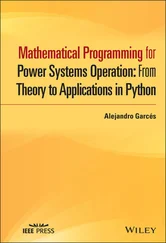Going still further in the direction of structuring the address space, instead of just sharing variables we could share encapsulated data types, often called objects. These differ from shared variables in that each object has not only some data, but also procedures, called methods, that act on the data. programs may only manipulate an object's data by invoking its methods. Direct access to the data is not permitted. By restricting access in this way, various new optimizations become possible.
Doing everything in software has a different set of advantages and disadvantages from using the paging hardware. In general, it tends to put more restrictions on the programmer but may achieve better performance. Many of these restrictions (e.g., working with objects) are considered good software engineering practice and are desirable in their own right. We will come back to this subject later.
Before getting into distributed shared memory in more detail, we must first take a few steps backward to see what shared memory really is and how shared-memory multiprocessors actually work. After that we will examine the semantics of sharing, since they are surprisingly subtle. Finally, we will come back to the design of distributed shared memory systems. Because distributed shared memory can be intimately related to computer architecture, operating systems, runtime systems, and even programming languages, all of these topics will come into play in this chapter.
6.2. WHAT IS SHARED MEMORY?
In this section we will examine several kinds of shared memory multiprocessors, ranging from simple ones that operate over a single bus, to advanced ones with highly sophisticated caching schemes. These machines are important for an understanding of distributed shared memory because much of the DSM work is being inspired by advances in multiprocessor architecture. Furthermore, many of the algorithms are so similar that it is sometimes difficult to tell whether an advanced machine is a multiprocessor or a multicomputer using a hardware implementation of distributed shared memory. We will conclude by comparing the various multiprocessor architectures to some distributed shared memory systems and discover that there is a spectrum of possible designs, from those entirely in hardware to those entirely in software. By examing the entire spectrum, we can get a better feel for where DSM fits in.
Although most computers have an external memory, self-contained chips containing a CPU and all the memory also exist. Such chips are produced by the millions, and are widely used in cars, appliances, and even toys. In this design, the CPU portion of the chip has address and data lines that directly connect to the memory portion. Figure 6-1(a) shows a simplified diagram of such a chip.
Fig. 6-1.(a) A single-chip computer. (b) A hypothetical shared-memory multiprocessor.
One could imagine a simple extension of this chip to have multiple CPUs directly sharing the same memory, as shown in Fig. 6-1(b). While it is possible to construct a chip like this, it would be complicated, expensive, and highly unusual. An attempt to construct a one-chip multiprocessor this way, with, say, 100 CPUs directly accessing the same memory would be impossible for engineering reasons. A different approach to sharing memory is needed.
6.2.2. Bus-Based Multiprocessors
If we look closely at Fig. 6-1(a), we see that the connection between the CPU and the memory is a collection of parallel wires, some holding the address the CPU wants to read or write, some for sending or receiving data, and the rest for controlling the transfers. Such a collection of wires is called a bus. This bus is on-chip, but in most systems, buses are external and are used to connect printed circuit boards containing CPUs, memories, and I/O controllers. On a desktop computer, the bus is typically etched onto the main board (the parent-board), which holds the CPU and some of the memory, and into which I/O cards are plugged. On minicomputers the bus is sometimes a flat cable that wends its way among the processors, memories, and I/O controllers.
A simple but practical way to build a multiprocessor is to base it on a bus to which more than one CPU is connected. Fig. 6-2(a) illustrates a system with three CPUs and a memory shared among all of them. When any of the CPUs wants to read a word from the memory, it puts the address of the word it wants on the bus and asserts (puts a signal on) a bus control line indicating that it wants to do a read. When the memory has fetched the requested word, it puts the word on the bus and asserts another control line to announce that it is ready. The CPU then reads in the word. Writes work in an analogous way.
Fig. 6-2.(a) A multiprocessor. (b) A multiprocessor with caching.
To prevent two or more CPUs from trying to access the memory at the same time, some kind of bus arbitration is needed. Various schemes are in use. For example, to acquire the bus, a CPU might first have to request it by asserting a special request line. Only after receiving permission would it be allowed to use the bus. The granting of this permission can be done in a centralized way, using a bus arbitration device, or in a decentralized way, with the first requesting CPU along the bus winning any conflict.
The disadvantage of having a single bus is that with as few as three or four CPUs the bus is likely to become overloaded. The usual approach taken to reduce the bus load is to equip each CPU with a snooping cache(sometimes called a snoopy cache), so called because it "snoops" on the bus. caches are shown in Fig. 6-2(b). They have been the subject of a large amount of research over the years (Agarwal et al., 1988; Agarwal and Cherian, 1989; Archibald and Baer, 1986; Cheong and Veidenbaum, 1988; Dahlgren et al., 1994; Eggers and Katz, 1989a, 1989b; Nayfeh and Olukotun, 1994; Przybylski et al., 1988; Scheurich and Dubois, 1987; Thekkath and Eggers, 1994; Vernon et al., 1988; and Weber and Gupta, 1989). All of these papers present slightly different cache consistency protocols,that is, rules for making sure that different caches do not contain different values for the same memory location.
One particularly simple and common protocol is called write through.When a CPU first reads a word from memory, that word is fetched over the bus and is stored in the cache of the CPU making the request. If that word is needed again later, the CPU can take it from the cache without making a memory request, thus reducing bus traffic. These two cases, read miss (word not cached) and read hit (word cached) are shown in Fig. 6-3 as the first two lines in the table. In simple systems, only the word requested is cached, but in most, a block of words of say, 16 or 32 words, is transferred and cached on the initial access and kept for possible future use.
| Event |
Action taken by a cache in response to its own CPU's operation |
Action taken by a cache in response to a remote CPU's operation |
| Read miss |
Fetch data from memory and store in cache |
(No action) |
| Read hit |
Fetch data from local cache |
(No action) |
| Write miss |
Update data in memory and store in cache |
(No action) |
| Write hit |
Update memory and cache |
Invalidate cache entry |
Fig. 6-3.The write-through cache consistency protocol. The entries for hit in the third column mean that the snooping CPU has the word in its cache, not that the requesting CPU has it.
Each CPU does its caching independent of the others. Consequently, it is possible for a particular word to be cached at two or more CPUs at the same time. Now let us consider what happens when a write is done. If no CPU has the word being written in its cache, the memory is just updated, as if caching were not being used. This operation requires a normal bus cycle. If the CPU doing the write has the only copy of the word, its cache is updated and memory is updated over the bus as well.
Читать дальше












